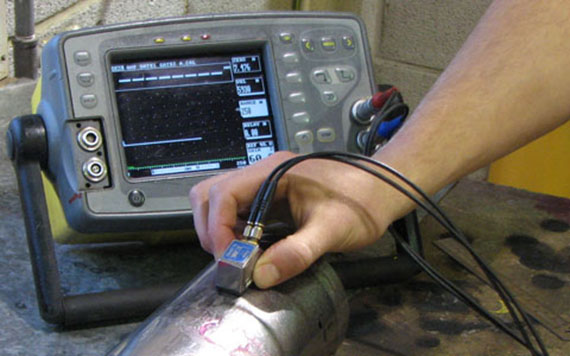In the world of industrial quality assurance, frequency calibration in inspection instruments is a critical aspect that cannot be overlooked. Calibration ensures that instruments provide accurate readings, which is essential for maintaining product quality and safety standards. This article delves into the importance of frequency calibration, especially for those involved in quality assurance and inspection processes.

The Basics of Frequency Calibration
At its core, frequency calibration is the process of adjusting and setting an instrument to ensure its measurements are accurate and within specified limits. This is particularly crucial for inspection instruments that rely on precise readings to function correctly.
Why Calibration is Essential
Calibration is vital for several reasons. Firstly, it ensures measurement accuracy, which is fundamental in any inspection process. Secondly, regular calibration helps in maintaining compliance with industry standards and regulatory requirements. Without proper calibration, inspection instruments may provide inaccurate results, leading to faulty product assessments and potential safety hazards.
Understanding the Calibration Process
Frequency calibration involves several steps, each crucial to achieving accurate results. The process typically begins with a comparison of the instrument’s output to a known standard. Adjustments are then made to align the instrument’s readings with the standard.
Steps in Calibration
- Initial assessment of the instrument’s current readings.
- Comparison with a standard reference.
- Adjustment of the instrument’s settings.
- Verification of the adjusted readings.
- Documentation of the calibration process.
Types of Inspection Instruments Requiring Calibration
Various inspection instruments require frequency calibration. These include ultrasonic flaw detectors, vibration testers, and other precision measuring devices. Each instrument type may have its specific calibration needs and schedules.
Ultrasonic Flaw Detectors
Ultrasonic flaw detectors are used to identify imperfections in materials. Calibration ensures that these devices can accurately detect flaws at the correct frequency settings. For more on common frequency settings for such instruments, check out this article.
Vibration Testers
Vibration testers help in analyzing the stability and integrity of structures. Proper calibration ensures that these instruments provide reliable data necessary for accurate assessments. Learn more about synchronization in vibration testing here.
Challenges in Frequency Calibration
While frequency calibration is essential, it poses several challenges. These include the need for specialized equipment, skilled personnel, and the time required to perform accurate calibrations. Additionally, maintaining a regular calibration schedule can be demanding but is necessary to ensure continued accuracy.
Overcoming Calibration Challenges
To overcome these challenges, companies can invest in training for their staff, use advanced calibration equipment, and establish a routine calibration schedule. For tips on determining inspection frequency and schedules, see this external resource.
The Role of Calibration in Predictive Maintenance
Calibration is a key component of predictive maintenance strategies. By ensuring that inspection instruments are accurately calibrated, companies can better predict equipment failures and plan maintenance activities effectively. Explore the role of frequency in predictive maintenance here.
Benefits of Predictive Maintenance
Predictive maintenance helps in reducing downtime, extending the lifespan of equipment, and saving costs on repairs. It relies heavily on accurate data from well-calibrated instruments.
Conclusion
In conclusion, frequency calibration in inspection instruments is a vital process for ensuring measurement accuracy and maintaining quality standards. For industry QA professionals, understanding and implementing effective calibration practices is crucial for achieving reliable and consistent inspection results.

Frequently Asked Questions
What is frequency calibration?
Frequency calibration is the process of adjusting inspection instruments to ensure their measurements are accurate and consistent with industry standards.
Why is calibration important for inspection instruments?
Calibration is important because it ensures that inspection instruments provide accurate readings, which are essential for maintaining product quality and safety standards.
How often should inspection instruments be calibrated?
The frequency of calibration depends on the instrument type, usage, and industry standards. Regular calibration is recommended to ensure continued accuracy.
This article contains affiliate links. We may earn a commission at no extra cost to you.
